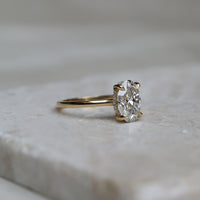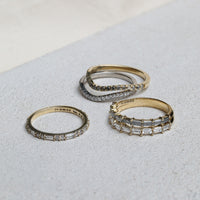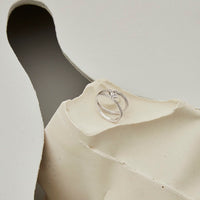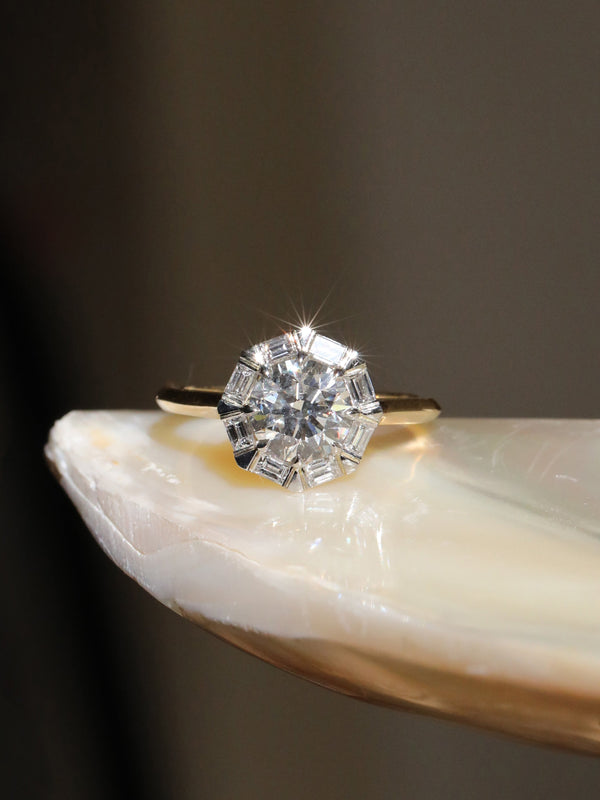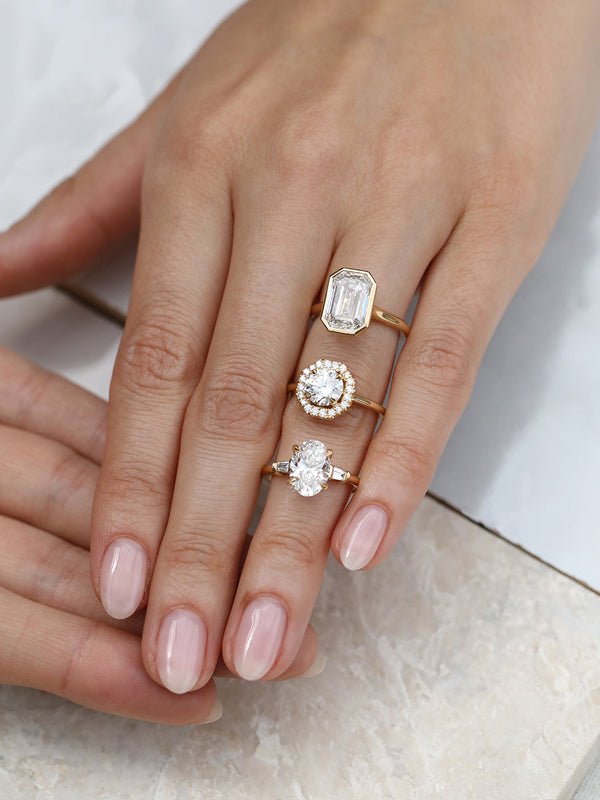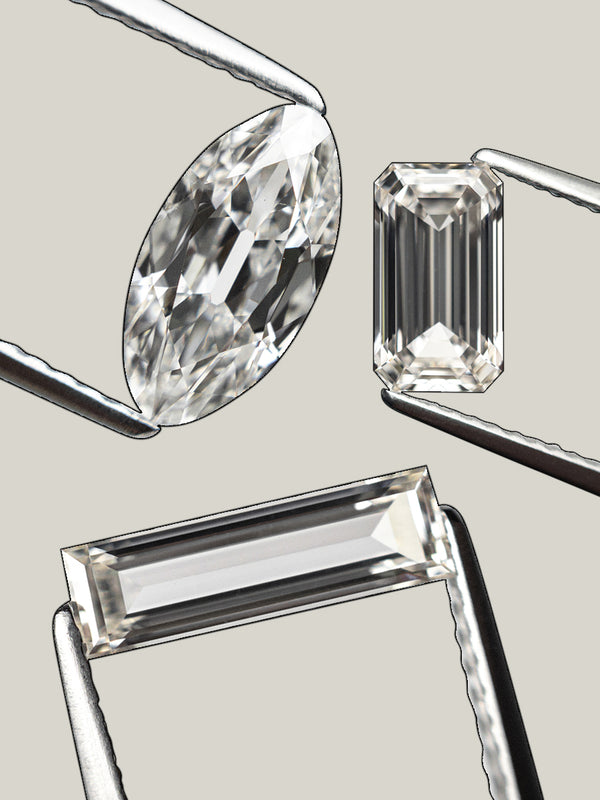From incredible discoveries to dazzling cuts and colours, each of these famous diamonds has a story that is as unique as the stone itself. With excerpts taken from one of our favourite books - Famous Diamonds by Ian Balfour.
THE JONKER
The Jonker was found in 1934 by a digger named Johannes Jacobus Jonker in the South African Mines of Elandsfontein. The incredible find was a superbly icy white and oblong-shaped rough diamond measuring roughly 6.5x3cm - the fourth largest gem stone to have been found at the time of its discovery.

It took several years to find a diamond cutter skilled enough to divide the Jonker by hand, but it was eventually cut into twelve principle diamonds and Jonker I (pictured in the centre below) is to this day considered one of the most perfect cut diamonds of all time.

CONDÉ DIAMOND
Known as the ‘Great Condé’, the 9.01ct diamond is comparatively small in this line-up. Nevertheless, the story behind the Condé makes it worthy of a place and we really can’t resist a pink diamond.
Louis II, the French Prince of Condé (pictured below) was an ardent womaniser, but his questionable reputation was cast aside in favour of his achievements on the battlefield.
Given the diamond in commendation of his battle efforts for France, it has since been on display in the Institut de France and left only once when it was stolen - and later found in a hotel room - in an apple left by two thieves.


TAYLOR-BURTON DIAMOND
Few did more to draw particular attention to the appeal of large diamonds than Elizabeth Taylor and Richard Burton. Their well-publicised dealings because a source of interest to their global audience.
The couple were not the diamond’s first owners, but undoubtedly the most well known. The Pear Cut diamond was synonymous with Elizabeth Taylor’s elegance, and at 69.42 carats it certainly made a statement.


IDON'S EYE DIAMOND
While spurious tales of Persian Princes and the East India Company adorn this diamond’s history, the first authentic fact recorded is the Idol’s Eye (pictured below) appearance at a London sale in 1864.

A mysterious buyer, later revealed to be the 34th Ottoman Sultan Abdul Hamid II (pictured below), purchased the unusually cut diamond. In between a Cushion and a Pear cut, the diamond had a distinctive blue tinge that is clear in the picture.
After internal conflict within his empire, the overthrown Sultan went into exile. It is said that the servant entrusted with the jewels betrayed him and later sold the diamond in Paris.

Sources:
THE JONKER
The Jonker was found in 1934 by a digger named Johannes Jacobus Jonker in the South African Mines of Elandsfontein. The incredible find was a superbly icy white and oblong-shaped rough diamond measuring roughly 6.5x3cm - the fourth largest gem stone to have been found at the time of its discovery.

It took several years to find a diamond cutter skilled enough to divide the Jonker by hand, but it was eventually cut into twelve principle diamonds and Jonker I (pictured in the centre below) is to this day considered one of the most perfect cut diamonds of all time.

CONDÉ DIAMOND
Known as the ‘Great Condé’, the 9.01ct diamond is comparatively small in this line-up. Nevertheless, the story behind the Condé makes it worthy of a place and we really can’t resist a pink diamond.
Louis II, the French Prince of Condé (pictured below) was an ardent womaniser, but his questionable reputation was cast aside in favour of his achievements on the battlefield.
Given the diamond in commendation of his battle efforts for France, it has since been on display in the Institut de France and left only once when it was stolen - and later found in a hotel room - in an apple left by two thieves.


TAYLOR-BURTON DIAMOND
Few did more to draw particular attention to the appeal of large diamonds than Elizabeth Taylor and Richard Burton. Their well-publicised dealings because a source of interest to their global audience.
The couple were not the diamond’s first owners, but undoubtedly the most well known. The Pear Cut diamond was synonymous with Elizabeth Taylor’s elegance, and at 69.42 carats it certainly made a statement.


IDON'S EYE DIAMOND
While spurious tales of Persian Princes and the East India Company adorn this diamond’s history, the first authentic fact recorded is the Idol’s Eye (pictured below) appearance at a London sale in 1864.

A mysterious buyer, later revealed to be the 34th Ottoman Sultan Abdul Hamid II (pictured below), purchased the unusually cut diamond. In between a Cushion and a Pear cut, the diamond had a distinctive blue tinge that is clear in the picture.
After internal conflict within his empire, the overthrown Sultan went into exile. It is said that the servant entrusted with the jewels betrayed him and later sold the diamond in Paris.

Sources:
Famous Diamonds by Ian Balfour
